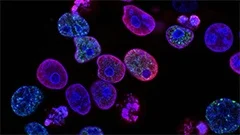Introduction
The study of the metabolism of pollutants is a crucial aspect of environmental biochemistry and toxicology. This field focuses on understanding how various xenobiotic substances are processed, detoxified, or accumulated within biological systems, primarily living organisms. The aim is to elucidate the mechanisms through which these pollutants interact with the cellular processes, causing potential adverse effects or leading to resistance and adaptation.
Overview of Pollutants
Origin and Types of Pollutants
Pollutants are exogenous substances that enter the environment and can potentially harm living organisms. They originate from various sources, including industrial activities, agricultural practices, household products, and even natural processes. The types of pollutants can be broadly classified into organic and inorganic pollutants, each exhibiting unique properties and modes of action within biological systems.
Bioaccumulation and Biomagnification
Two critical concepts in the study of pollutant metabolism are bioaccumulation and biomagnification. Bioaccumulation refers to the increase in the concentration of a pollutant within an organism over time, primarily due to uptake through the environment or food chain. Biomagnification, on the other hand, is the phenomenon whereby the concentration of a pollutant increases at each trophic level of a food chain.
Pollutant Metabolism: Mechanisms and Pathways
Enzymatic Reactions in Pollutant Metabolism
The metabolism of pollutants involves various enzymatic reactions catalyzed by phase I, II, and III enzymes. Phase I enzymes primarily add functional groups to the pollutant molecule, while phase II enzymes conjugate these functional groups with endogenous substrates, such as glucuronic acid or sulfate, leading to increased water solubility and excretion.
Detoxification Pathways
Detoxification pathways are critical for eliminating pollutants from the body. Major detoxification pathways include:
Phase I Reactions
- Oxidation reactions catalyzed by cytochrome P450 enzymes (CYPs)
- Reduction reactions catalyzed by reductases
- Hydrolysis reactions catalyzed by esterases and hydrolases
Phase II Reactions
- Conjugation reactions with glucuronic acid, sulfate, acetate, or methyl groups
Resistance and Adaptation Mechanisms
Organisms can develop resistance and adaptation mechanisms to pollutants, primarily through gene expression changes, enzyme induction, and the development of efflux pumps. These mechanisms allow organisms to detoxify pollutants more efficiently or reduce their uptake, thereby minimizing potential adverse effects.
Case Studies: Examples of Pollutant Metabolism in Different Organisms
Pollutant Metabolism in Bacteria
Bacteria have developed various mechanisms for the metabolism and detoxification of pollutants, including the production of enzymes such as nitroreductases and dioxygenases. These enzymes catalyze the breakdown of explosives, such as nitroglycerin, or aromatic hydrocarbons, such as toluene.
Pollutant Metabolism in Plants
Plants can also metabolize pollutants through phase I and II reactions, similar to those observed in animals. Additionally, plants have developed specific pathways for the detoxification of heavy metals, such as phytochelatins and metallothioneins, which bind these toxic ions and render them less bioavailable.
Pollutant Metabolism in Fungi
Fungi exhibit unique mechanisms for the metabolism and detoxification of pollutants, including the production of lignin peroxidases and manganese peroxidases. These enzymes catalyze the breakdown of recalcitrant pollutants, such as polyaromatic hydrocarbons (PAHs) and polychlorinated biphenyls (PCBs).
Conclusion
The metabolism of pollutants is a complex and intricate process that involves various enzymatic reactions, detoxification pathways, and resistance mechanisms. Understanding the underlying mechanisms of pollutant metabolism is essential for predicting potential adverse effects on living organisms and for developing strategies to mitigate pollution-related issues.
MCQ: Test your knowledge!
Do you think you know everything about this course? Don't fall into the traps, train with MCQs! eBiologie has hundreds of questions to help you master this subject.
These courses might interest you
Create a free account to receive courses, MCQs, and advice to succeed in your studies!
eBiologie offers several eBooks containing MCQ series (5 booklets available free for each subscriber).



